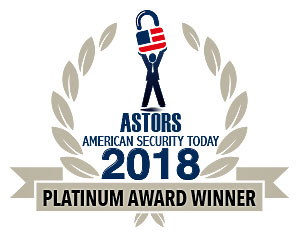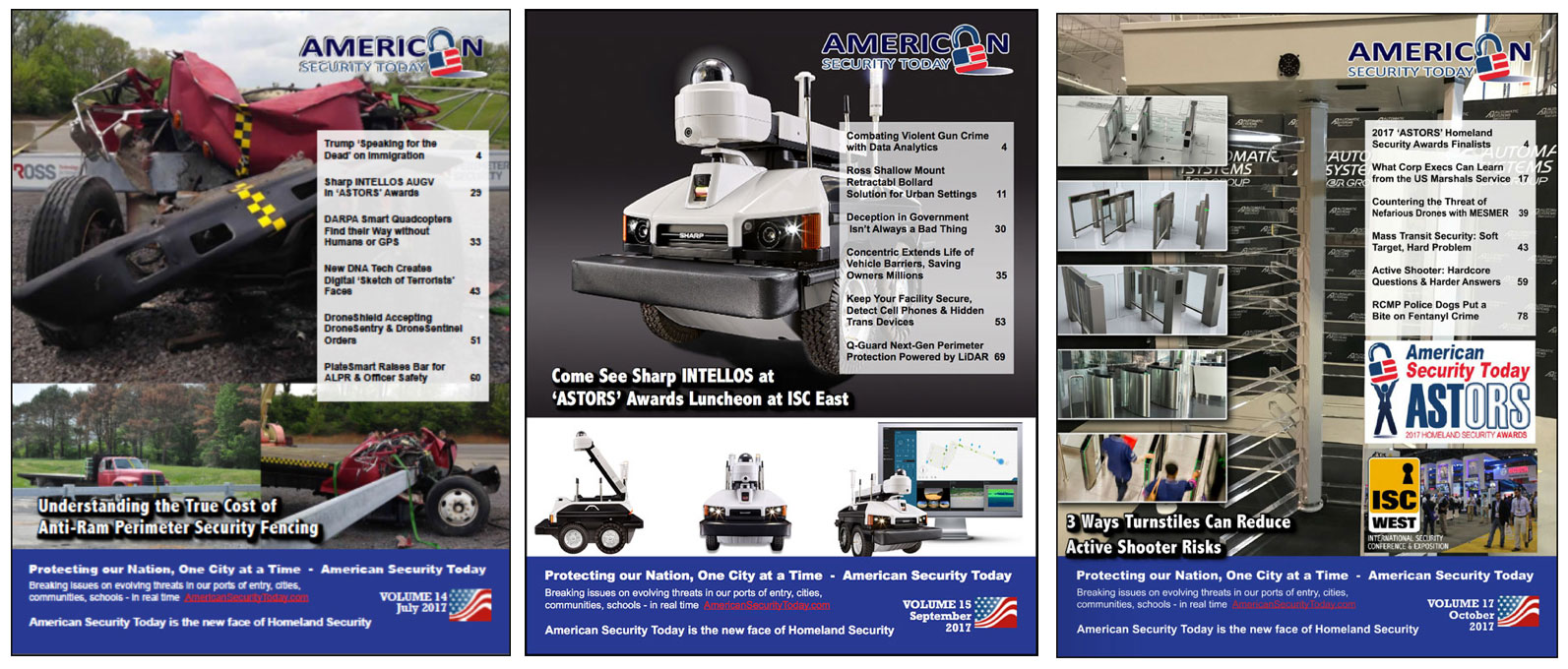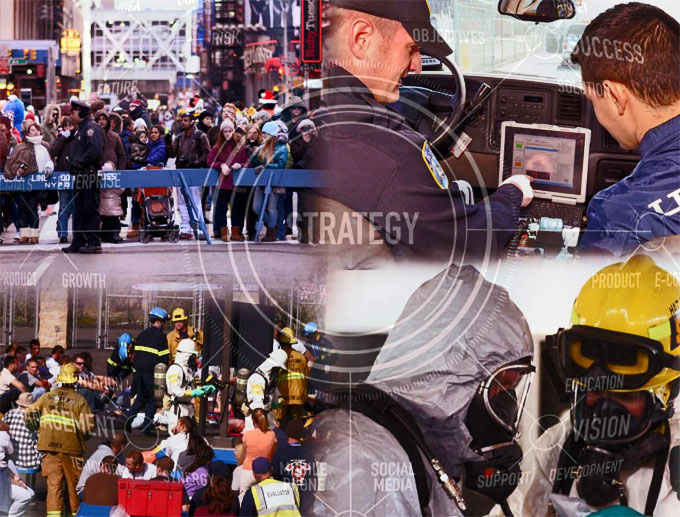
A radiological dispersal device (RDD), or ‘dirty bomb,’ detonation in a local jurisdiction will have significant consequences for public safety, responder health and critical infrastructure operations.
First responders and emergency managers must quickly assess the hazard, issue protective action recommendations, triage and treat the injured, and secure the scene in support of the individuals, families and businesses in the impacted community.
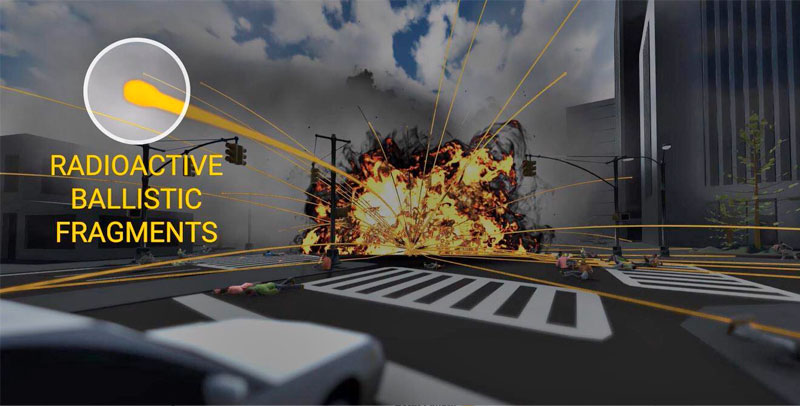
To address these critical needs, the Department of Homeland Security (DHS) Science and Technology Directorate (S&T) National Urban Security Technology Laboratory (NUSTL), in partnership with the Federal Emergency Management Agency (FEMA), and the Department of Energy (DOE) National Nuclear Security Administration (NNSA) published guidance for first responders and emergency managers on how to plan for the first minutes of an RDD detonation response.
It is for these efforts, of DHS S&T and the aforementioned agencies, that DHS S&T has been nominated to compete in the 2019 ‘ASTORS’ Homeland Security Awards Program.
DHS S&T has been a recognized Winner in the Annual ‘ASTORS’ Homeland Security Awards Program for Government Excellence in Homeland Security’, for Two Consecutive Years
The Radiological Dispersal Device Response Guidance Planning for the First 100 Minutes is the result of years of scientific research and experimentation conducted by DOE laboratories – Brookhaven National Laboratory (BNL) and Sandia National Laboratories – coupled with S&T NUSTL’s direct conversations with first responders about operationalizing and documenting the scientific recommendations.
(S&T’s National Urban Security Technology Laboratory (NUSTL), collaborated with first responders, DOE, and FEMA to publish the “RDD Response Guidance: Planning for the First 100 Minutes,” is designed to encourage comprehensive radiological preparedness and assist first responders and local jurisdictions to both operationalize and implement best practices for RDD detonation response. See below for videos divided by individual tactics. Courtesy of DHS Science and Technology Directorate and YouTube. Posted on Apr 1, 2019.)
The Guidance includes five missions and ten tactics to address initial response efforts.
It is intended to be engaging and easy to use, allowing communities to plug in their specific assets, agencies and response protocols.
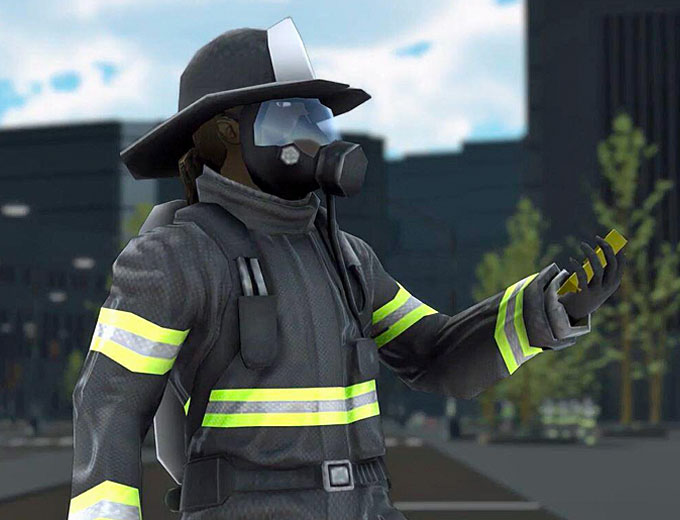
“The Guidance provides emergency planners and first responders across the nation with a playbook of best practices to start from in planning for a RDD detonation response,” said Ben Stevenson, Program Manager at S&T NUSTL.
Now that the Guidance is published, S&T’s NUSTL is leading efforts to make it accessible to the responder communities who will need to incorporate it into their planning efforts and to state and federal partners that will support the response.
Animating the Guidance
To support responder understanding of the missions and tactics described in the RDD Response Guidance, S&T’s NUSTL worked with DOE’s Lawrence Livermore National Laboratory to animate the missions and tactics.
Using a realistic RDD detonation scenario, the team developed short training clips that can be used to:
-
Instruct response actions;
-
Show appropriate personal protective equipment (PPE); and
-
Provide realistic radiological readings that responders may see during a response.
These are available on S&T’s website and also on the RadResponder platform.

Training the Nation
S&T’s NUSTL is working with several organizations to disseminate the key missions and tactics of the Guidance as well as the animations to responders across the nation. On the immediate horizon are:
- The development of a train-the-planner course for emergency planners training federal personnel located regionally across the country who support state and local activities;
- The publication of templated RDD detonation exercise materials that first responders, Weapons of Mass Destruction Civil Support Teams (WMD-CSTs) and other partners can use individually or collaboratively.
On the first effort, S&T’s NUSTL, FEMA’s National Training and Education Division, and the Counterterrorism Operations Support Center for Radiological Nuclear Training are designing a training specifically for emergency planners who are generally responsible for writing and organizing emergency response plans for local communities.
This train-the-planner course will be offered as a mobile course and yield the basis of an RDD response plan for a local community, and will be piloted in the coming year before it is finalized within the FEMA course catalog in 2021.
“Partnering with other agencies to develop and deliver the train-the-planner course brought together expertise from across the nation to ensure the training course will meet the objectives,” said James Dansby, Program Manager at FEMA.
S&T’s NUSTL is also executing two-day train-the-trainer sessions in all eight of the DOE Radiological Assistant Program (RAP) regions.
Working with BNL and DOE NNSA, the first day of this training allows representatives in each RAP region to receive training on the Guidance, and on the second day they help the S&T’s NUSTL project team to train regional representatives from their federal, state and local jurisdictions on the key response missions and tactics they learned about on the previous day.

This effort will create a cadre who can support state and local understanding of the science behind the RDD Response Guidance for planning purposes. All sessions are scheduled to be complete by August 2019.
Dan Blumenthal, Consequence Management Program Manager at DOE NNSA said, “I wanted to make sure the RDD Response Guidance is being adopted at the state and local levels, and that all their questions are being answered. One way to do that is making sure RAP teams are up to speed.”
Lastly, S&T’s NUSTL is partnering with Idaho National Laboratory to develop standardized exercise templates for RDD detonation responses that can be used by the National Guard Bureau 57 WMD-CSTs across the country in their required training and exercises, in conjunction with state and local partners.
Providing standardized training and exercise procedures, rooted in sound scientific principles and practices from the Guidance will support local radiological preparedness and encourage interagency coordination for radiological/nuclear response and recovery.
These templated exercises will be available to state and local partners in 2020.

Publishing the RDD Response Guidance is a big step forward in ensuring that state and local first responders have a solid scientific basis of the hazard and an easy-to-adopt method of planning for the initial response.
But publishing guidance documents is not enough, and S&T’s NUSTL and its partners will continue working to ensure the recommendations are further integrated into training courses, exercise design documents and national response protocols.
True preparedness for radiological emergencies comes from good coordination and communication between agencies and protocols at the local, state and federal levels, and S&T’s NUSTL will continue to execute research and development projects that, while focusing on supporting first responder radiological capabilities, benefit a comprehensive capability across agencies and levels of government.
Watch DHS S&T RDD Response Guidance Videos Now!
Agencies, states, cities, and responders are encouraged to share these animations, divided by individual tactics ,with their teams, colleagues, and partners so they can use the videos as a reference to visualize and understand the guidance.
RDD Response Guidance:
Planning for the First 100 Minutes Introduction
(Videos are courtesy of DHS Science and Technology Directorate and YouTube. Posted on Apr 5, 2019.)
Tactics 1 & 2: Initial Response
Tactic 3: Give Report from the Scene
Tactic 4: Issue Protective Actions to the Public
Tactic 5: Notify Partners and Request
Preamble
Tactic 6: Initiate Life-Saving Rescue Operations
Tactic 7: Secure and Manage the Scene
Tactic 8: Map and Measure Overview
Tactic 8: Map and Measure Phase 1 — Detonation Site and Transect
Tactic 8: Map and Measure Phase 2 — Near-Field, 10-Point Monitoring, Outlying Areas
Tactic 9: Commence Phased Evacuations
Tactic 10: Monitor and Decontaminate
DHS Science and Technology Directorate (S&T) Honored in the 2018 ‘ASTORS’ Homeland Security Awards Program
-
‘Excellence in Homeland Security’
-
Android Team Awareness Kit (ATAK)
-
‘Excellence in Homeland Security’
-
Enhanced Dynamic Geo-Social Environ (EDGE) Virtual Online Training for First Responders
-
‘Excellence in Homeland Security’
-
Flood Apex Program Flood Sensors
-
*DHS S&T was also recognized in thee 2017 ‘ASTORS’ Awards Program
(Learn About the Android Team Awareness Kit (ATAK), a GPS communications tool that runs on a mobile device. It improves situational awareness by allowing users to know where their mission partners are located, regardless of affiliation, improves communications through a variety of applications and was successfully used in 2017 Hurricane operations in Houston and Puerto Rico. Courtesy of the DHS Science and Technology Directorate and YouTube.)
The Annual ‘ASTORS’ Awards Program is specifically designed to honor distinguished government and vendor solutions that deliver enhanced value, benefit and intelligence to end users in a variety of government, homeland security and public safety vertical markets.

The 2018 ‘ASTORS’ Awards Program drew an overwhelming response from industry leaders with a record high number of corporate and government nominations received, as well as record breaking ‘ASTORS’ Presentation Luncheon Attendees, with top firms trying to register for the exclusive high – end luncheon and networking opportunity – right up to the event kickoff on Wednesday afternoon, at the ISC East registration!
Over 130 distinguished guests representing National, State and Local Governments, and Industry Leading Corporate Firms, gathered from across North America, Europe and the Middle East to be honored among their peers in their respective fields which included:
- The Department of Homeland Security
- The Federal Protective Service (FPS)
- Argonne National Laboratory
- The Department of Homeland Security
- The Department of Justice
- The Security Exchange Commission Office of Personnel Management
- U.S. Customs and Border Protection
- Viasat, Hanwha Techwin, Lenel, Konica Minolta Business Solutions, Verint, Canon U.S.A., BriefCam, Pivot3, Milestone Systems, Allied Universal, Ameristar Perimeter Security and More!
The Annual ‘ASTORS’ Awards is the preeminent U.S. Homeland Security Awards Program highlighting the most cutting-edge and forward-thinking security solutions coming onto the market today, to ensure our readers have the information they need to stay ahead of the competition, and keep our Nation safe – one facility, street, and city at a time.

The 2019 ‘ASTORS’ Homeland Security Awards Program is Proudly Sponsored by ATI Systems, Attivo Networks, Automatic Systems, and Desktop Alert.
Nominations are being accepted for the 2019 ‘ASTORS’ Homeland Security Awards at https://americansecuritytoday.com/ast-awards/.
Comprehensive List of Categories Include:
| Access Control/ Identification | Personal/Protective Equipment | Law Enforcement Counter Terrorism |
| Perimeter Barrier/ Deterrent System | Interagency Interdiction Operation | Cloud Computing/Storage Solution |
| Facial/IRIS Recognition | Body Worn Video Product | Cyber Security |
| Video Surveillance/VMS | Mobile Technology | Anti-Malware |
| Audio Analytics | Disaster Preparedness | ID Management |
| Thermal/Infrared Camera | Mass Notification System | Fire & Safety |
| Metal/Weapon Detection | Rescue Operations | Critical Infrastructure |
| License Plate Recognition | Detection Products | And Many Others! |
Don’t see a Direct Hit for your Product, Agency or Organization?
Submit your category recommendation for consideration to Michael Madsen, AST Publisher at: mmadsen@americansecuritytoday.com.
Government Excellence Awards in the ‘ASTORS’ Awards
In addition to DHS S&T, following Government Agencies were recognized in thee 2018 ‘ASTORS’ Homeland Security Awards:
-
Argonne National Laboratory, Modified Infrastructure Survey Tool (MIST)
-
Defense Advanced Research Projects Agency – DARPA, Subterranean (SubT) Challenge
(Learn About the DARPA Subterranean Challenge working with multidisciplinary teams from around the world to compete in the development of the autonomy, perception, networking, and mobility technologies necessary to map explore and search underground networks in unpredictable conditions. Courtesy of DARPAtv and YouTube.)
-
Department of Justice (DOJ) Bureau of Justice Assistance (BJA), Project Safe Childhood
-
Department of Justice (DOJ) Bureau of Justice Assistance (BJA), Project Safe Neighborhoods Program
-
Department of Justice (DOJ) Securities Exchange Commission (SEC) Office of Personnel Management, Federal Risk Mgmt Process Training (FedRMPTP)
-
DHS Federal Protective Service, Modified Infrastructure Survey Tool (MIST)
-
Federal Bureau of Investigation (FBI),Violent Crimes against Children (VCAC) program
(Learn About the FBI VCAC Program, and hear from Special Agent Danielle Messineo, who works in the Crimes Against Children division, trying to prevent future victims by giving presentations to schoolchildren. Courtesy of USA Network and YouTube.)
-
International Association of Counterterrorism and Security Professionals (IACP), IACSP Training and Technology
-
Joint Interagency Task Force South (JIATF-S), United States Multi-Service, Multi-Agency Task Force
-
Pentagon Force Protection Agency, Detection & Emergency Response to envelopes containing the deadly poison ricin at a Pentagon mail screening facility
(Learn About the Joint Interagency Task Force South on Key West, Florida, a multi-agency, international alliance whose mission is to cover 42 million square miles of territory primarily in Central and South America to stem the flow of illegal drugs and to disrupt and dismantle sophisticated narco-trafficking networks. Much of that work is carried out on the high seas. Courtesy of Doug Brumbaugh and YouTube.)
-
U.S. Customs and Border Protection, CBP Entry/Exit Program
- US Immigration and Customs Enforcement’s (ICE) Homeland Security Investigations (HSI), Human Rights Violators and War Crimes Unit (HRVWCU)
Also Recognized for ‘Excellence in Homeland Security’ in the 2018 ‘ASTORS’ Awards Program:
-
Edward Reinhold, Deputy Assistant Director, FBI (Ret)
-
Joel McNelly, Charlotte-Mecklenburg Police Department
-
Matt Quillen, Bristol Virginia Police Department
-
Stanley I. White, Counterintelligence Advisor, the International Association for Counterrorism & Security Professionals (IACSP)
-
Thomas Homan, Acting Director, U.S. Immigration and Customs Enforcement (ICE) (Ret)
-
Thomas O’Connor, President of the FBI Agents Association
2018 Champions Edition
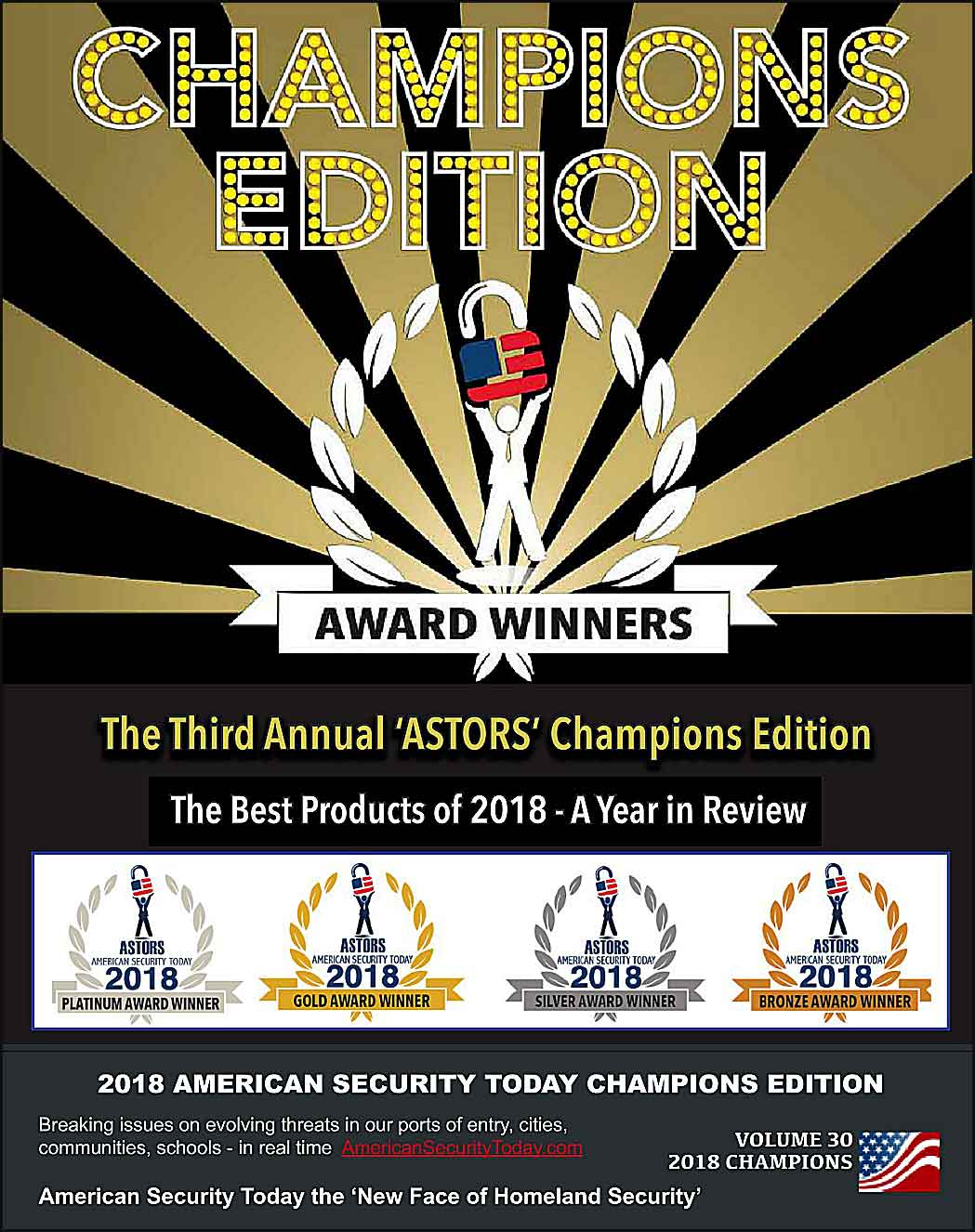 See the 2018 ‘ASTORS’ Champions Edition – ‘Best Products of 2018 ‘ Year in Review’ for in-depth coverage of the outstanding products and services of firms receiving American Security Today’s 2018‘ASTORS’ Homeland Security Awards.’
See the 2018 ‘ASTORS’ Champions Edition – ‘Best Products of 2018 ‘ Year in Review’ for in-depth coverage of the outstanding products and services of firms receiving American Security Today’s 2018‘ASTORS’ Homeland Security Awards.’
Enter Early to Maximize Media Coverage of your Products and Services at Kickoff, and Get the Recognition Your Organization Deserves!
And be sure to Register Early for the 2019 ‘ASTORS’ Awards Presentation Luncheon at ISC East 2019 to ensure your place at this limited- space event!

2018 ‘ASTORS’ Homeland Security Awards Luncheon at ISC East
















